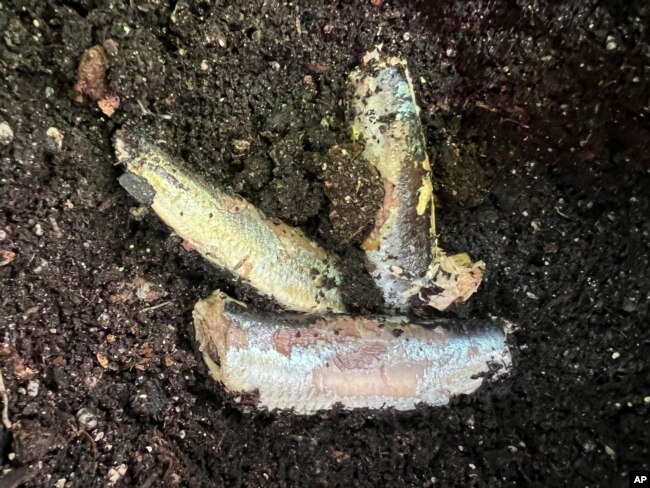The cost of everything – from fuel to food – seems to be rising around the world. So, growing our own food is a good way to save money.
However, the cost of gardening materials has also been rising.
Plant expert Jessica Damiano writes about gardening for the Associated Press. In her latest story, she writes about saving money on fertilizer. She suggests that home gardeners make their own.
All plants require nutrients. Necessary nutrients exist naturally in most soils. But over time, they get used up. So, nutrients need to be added to the soil from time to time for plants to produce fruits and vegetables for our meals.
This is where fertilizers come in.
Most fertilizers contain three primary nutrients: nitrogen, phosphorus, and potassium. (This is often represented by the N-P-K ratio on fertilizer containers.) Damiano explains how the three work. Nitrogen helps the plant turn its energy into green, leafy growth. Phosphorus helps the development of roots, fruits, and flowers. And potassium helps the plant’s overall health.
Many fertilizers also have secondary nutrients, like calcium and magnesium. They sometimes have micronutrients such as iron, copper, boron, manganese, and zinc.
All these nutrients are necessary for creating the best growing conditions for a plant.
Here is some good news: There are many ways that home gardeners can save money while providing their plants with high-quality nutrients.
Cut grass
Consider cut grass. If you leave cut grass on the lawn, you may not need fertilizer.
As grass breaks down, it releases nitrogen into the soil. This will help grass to continue to grow. However, Damiano gives this warning: Do not use fresh cut grass in garden beds. It will burn your plants.
Compost is best for soil
Compost, she says, is the best thing you can add to soil.
Compost helps to control how much water stays in the soil. It keeps dry soil wet. It can help thick dirt, or clay, drain water. Compost also adds nutrients to the soil.
Damiano advises to use a lot of compost in plant beds or planting holes. She suggests using compost in place of mulch. (Mulch is placed on top of the soil.)
To make your own compost, simply collect fruit and vegetable scraps. Do not add meat, dairy, or fats. You can keep the food scraps in a bowl in your kitchen. Whenever it fills up, bury the material directly in the garden soil. As the scraps break down, they add nutrients.
Just be sure to bury them at least 25 to 30 centimeters deep. This will keep hungry wildlife from digging them up. And bury the scraps several centimeters from the plants. This will avoid damaging roots.
Fish fertilizer
Many gardeners treat their plants with fish fertilizer. It contains nitrogen, phosphorus, potassium, calcium, magnesium, sulfur, and sodium, among other nutrients. And it could be costly. So, Damiano suggests burying fish parts deep in the garden soil — again 25 to 30 centimeters deep.
You can also make your own fish fertilizer by putting fish scraps in a closed container of water — about 19 liters. Leave it for about a month. Then drain the liquid and use it to water plants. However, do not use processed fish that has added salt. Too much salt can damage the soil and your plants.








